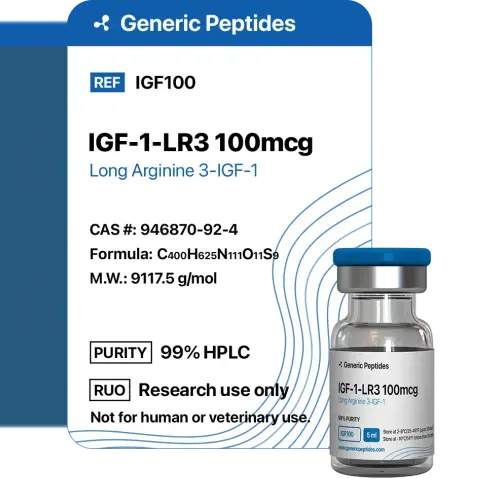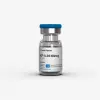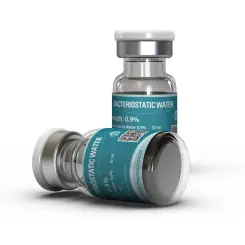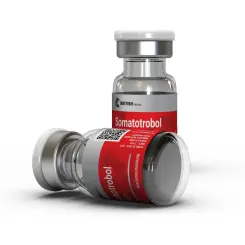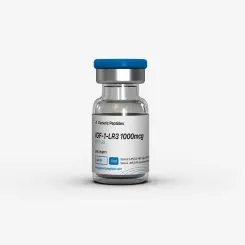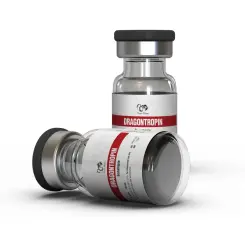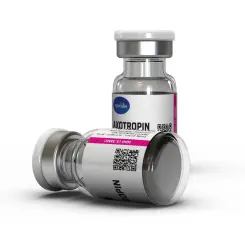IGF-1-LR3 100 mcg
- Promotes muscle hypertrophy and strength.
- Accelerates recovery from injuries.
- Supports tissue repair and regeneration.
- Enhances overall physical performance.
What is IGF LR3 Good for?
IGF-1 LR3 100 mcg is good for promoting muscle growth, accelerating recovery from injuries, and supporting tissue repair. It enhances protein synthesis and cell proliferation, making it popular among athletes for bodybuilding, rehabilitation, and anti-aging purposes, though its use is primarily experimental.
Does IGF-1 Really Build Muscle?
Yes, IGF-1 LR3 can build muscle by stimulating protein synthesis, increasing muscle cell size (hypertrophy), and aiding recovery, as supported by preclinical studies and anecdotal reports. Its effectiveness depends on dosage, training, and nutrition, but significant muscle gains require consistent use and professional oversight.
What is the Best Time to Take IGF-1?
The best time to take IGF-1 LR3 100 mcg is typically post-workout to maximize anabolic effects, or before bed to support overnight recovery, administered once daily. Inject subcutaneously using a sterile syringe (29-31 gauge), avoiding food 30 minutes before and after. Consult a professional for personalized timing.
Is IGF-1 Good or Bad for You?
IGF-1 LR3 can be beneficial for muscle growth and recovery when used responsibly under professional guidance, but it may pose risks such as hypoglycemia, joint pain, or increased cancer risk with long-term use due to limited human data. Its safety depends on dosage, cycle length, and individual health; consult a professional to weigh benefits versus risks.
Is IGF-1-LR3 100 mcg Safe?
IGF-1-LR3 100 mcg can be safe when used responsibly under professional guidance, but its safety profile is not fully established due to limited human studies. Potential risks include hypoglycemia, joint discomfort, or hormonal imbalance. Regular bloodwork to monitor glucose, IGF-1 levels, and overall health is advised. Not recommended for beginners or those with metabolic disorders without medical oversight.
How Long Does IGF-1-LR3 100 mcg Stay in Your System?
IGF-1 LR3 has a half-life of approximately 20-30 hours, requiring daily or every-other-day dosing for sustained effects. It remains detectable in the body for about 2-3 days, depending on dosage, metabolism, and testing methods. Bloodwork and professional guidance are advised for precise clearance timelines.
Mechanism of Action IGF-1-LR3 100 mcg
IGF-1 LR3 binds to insulin-like growth factor receptors, promoting protein synthesis, cell proliferation, and tissue repair. Its extended half-life (due to LR3 modification) enhances anabolic effects, supporting muscle growth and recovery. Effects begin within hours and accumulate with consistent dosing. Users notice muscle benefits within weeks. What doesn't happen: no direct fat loss, but monitoring is key.
How It Works & Key Benefits
IGF-1-LR3 100 mcg excels for athletes in muscle-building or recovery phases, requiring a high-protein diet and resistance training to maximize its anabolic benefits.
- Promotes muscle hypertrophy and strength.
- Accelerates recovery from injuries.
- Supports tissue repair and regeneration.
- Enhances overall physical performance.
- Delivers prolonged anabolic stimulation.
- Stacks with other peptides for synergy.
Who It's For & Product Specifications
Best for advanced athletes or researchers seeking muscle growth and recovery; suitable for men and women with medical supervision. Not recommended for beginners or those with diabetes or cancer history without professional guidance.
| Substance | IGF-1 LR3 |
|---|---|
| Concentration | 100 mcg |
| Form | Vial (requires reconstitution) |
| Pack Size | Vial |
| Half-life | ~20-30 hours |
| Aromatization/Hepatic | Non-applicable / Minimal hepatic |
| Primary Use | Muscle growth, recovery |
| Manufacturer | Generic Peptides |
| Brand | IGF-1 LR3 |
How to Take IGF-1-LR3 100 mcg
- Dosage: Men/Women: 20-50 mcg/day (reconstituted), typically as a single injection; start at 20 mcg to assess response.
- Frequency: Once daily, preferably post-workout or before bed.
- Cycle length: 4-6 weeks, followed by a break; discontinue if adverse effects occur.
- Preparation/Monitoring tips: Reconstitute with 1-2 ml Bacteriostatic Water using a sterile syringe (29-31 gauge insulin syringe), inject subcutaneously; monitor blood glucose, IGF-1 levels, and muscle response via labs; maintain hydration.
- Results timeline: Muscle growth and recovery in 2-4 weeks; optimal effects by 6 weeks.
- PCT timing: Not required, but monitor hormone levels post-cycle; consult a professional.
Popular Stacks
CJC-1295: Enhances GH synergy.
GHRP-6: Boosts GH and appetite.
Ipamorelin: Supports GH release.
Cycle Support: Supports overall health during use.
Comparisons & Alternatives
IGF-1-LR3 100 mcg vs IGF-1-LR3 1 mg: 100 mcg is a lower dose for cautious use; 1 mg provides higher potency.
IGF-1-LR3 100 mcg vs IGF-1 DES: LR3 has a longer half-life; DES acts faster locally.
IGF-1-LR3 100 mcg vs HGH: LR3 targets muscle; HGH has broader effects.
Side Effects & Risk Management
- Metabolic: Hypoglycemia—monitor blood sugar, adjust dose.
- Local: Injection site irritation—rotate sites, use proper technique.
- Other: Joint pain (rare)—rest, consult if persistent.
Consult a professional to ensure safe use and monitor metabolic and overall health.
FAQ
What is IGF LR3 good for?
IGF LR3 supports muscle growth and recovery; see What is IGF LR3 Good for. It's effective—consult professionals for safe use.
Does IGF-1 really build muscle?
Yes, it can build muscle; see Does IGF-1 Really Build Muscle. Use with oversight—consult professionals.
What is the best time to take IGF-1?
Post-workout or bedtime is ideal; see What is the Best Time to Take IGF-1. Adjust with guidance—consult professionals.
Is IGF-1 good or bad for you?
It can be beneficial but has risks; see Is IGF-1 Good or Bad for You. Monitor with care—consult professionals.
Is IGF-1-LR3 100 mcg safe?
It can be safe with oversight, but risks exist; see Is IGF-1-LR3 100 mcg Safe. Consult professionals for monitoring.
Related Products
- Provides a sterile medium for peptide reconstitution.
- Prevents bacterial growth with bacteriostatic properties.
- Supports safe and effective injection preparation.
- Ensures stability of reconstituted compounds.
- Promotes lean muscle growth and strength.
- Enhances fat loss for a defined physique.
- Improves recovery and tissue repair.
- Supports anti-aging and overall vitality.
- Promotes muscle hypertrophy and strength.
- Accelerates recovery from injuries.
- Supports tissue repair and regeneration.
- Enhances overall physical performance.
- Promotes lean muscle growth and tissue repair.
- Accelerates fat loss for a defined physique.
- Enhances recovery for frequent, intense training.
- Supports anti-aging benefits like skin health and energy.
- Promotes lean muscle growth and strength.
- Enhances fat loss for a defined physique.
- Improves recovery and tissue repair.
- Supports anti-aging and overall vitality.

